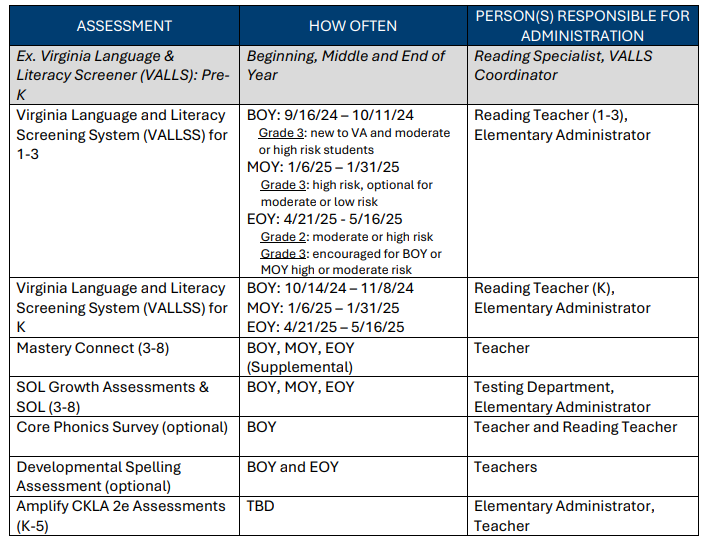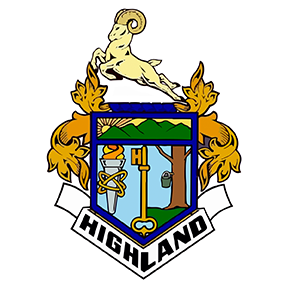
Literacy Assessments


The Virginia Language and Literacy Screening System (VALLSS) includes the VALLS assessment which is the Virginia Department of Education sponsored literacy screener for K-3. This system of screeners gives a snapshot of critical literacy skills at a single moment in time. It identifies students at risk for developing reading difficulties and provides instructionally useful information to target instruction.
The VALLS assessment is administered three times throughout the year in order to track student growth. Student summary reports are used to determine students who may be in need of supplemental or intervention services. If identified in the high-risk band, your child's school will prepare a Student Reading Plan that's tailored to help your child make progress in those areas identified on the screening assessment. Additional literacy instruction outlined in this plan may include time with a person or a program, or a combination of the two. Families are included in the development of this plan and help determine the goals set for their student based on a review of data and consultation with the school. Students in K-3 identified in the high-risk band on VALLS are required to have a Student Reading Plan
WHAT DO VALLS K-3 SCORES TELL ME?
1. If your child is at risk for developing reading difficulties. After all subtests are administered, your child will receive an indication of an overall risk band. These bands include: low, moderate, and high.
2. In what components of literacy your child needs further instruction. Teachers use this information to plan instruction and intervention, to ensure students get what they need in order to catch up.

Virginia Department of Education (VDOE) site has all the updates and resources to keep up with the English Standards of Learning.
The Virginia Standards of Learning (SOL) Assessment in English is designed to evaluate students' proficiency in reading, writing, and communication skills as outlined by the state's academic standards. The purpose of the assessment is to measure students' mastery of grade-level content, ensure they are on track for academic success, and identify areas where additional support may be needed. It also serves as a tool for educators and policymakers to assess the effectiveness of instruction and guide improvements in teaching practices. The state requires two different forms of assessments:
SOL Growth Assessments (SGA) are given in the beginning and middle of the year to grades 3-8. These assessments are to measure growth.
Standards of Learning (SOL) Tests are given at the completion of a course or end of year. This is assessment is to measure the success of the student based on the Board of Education's expectations for that level.
